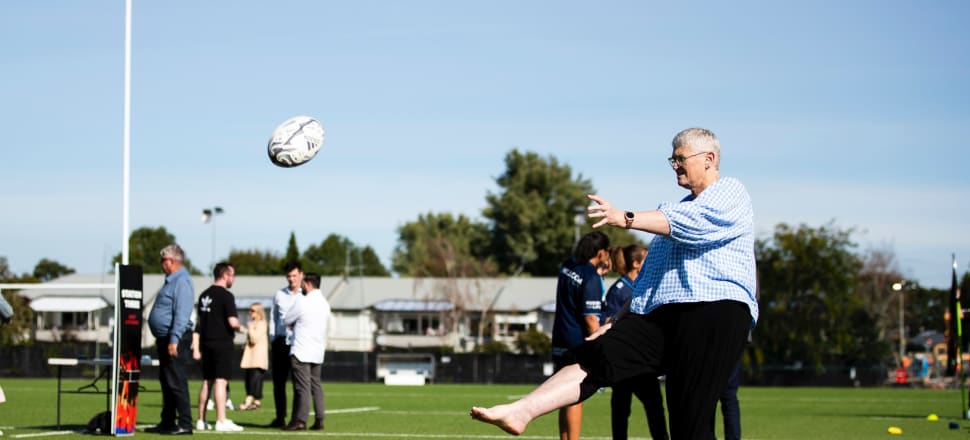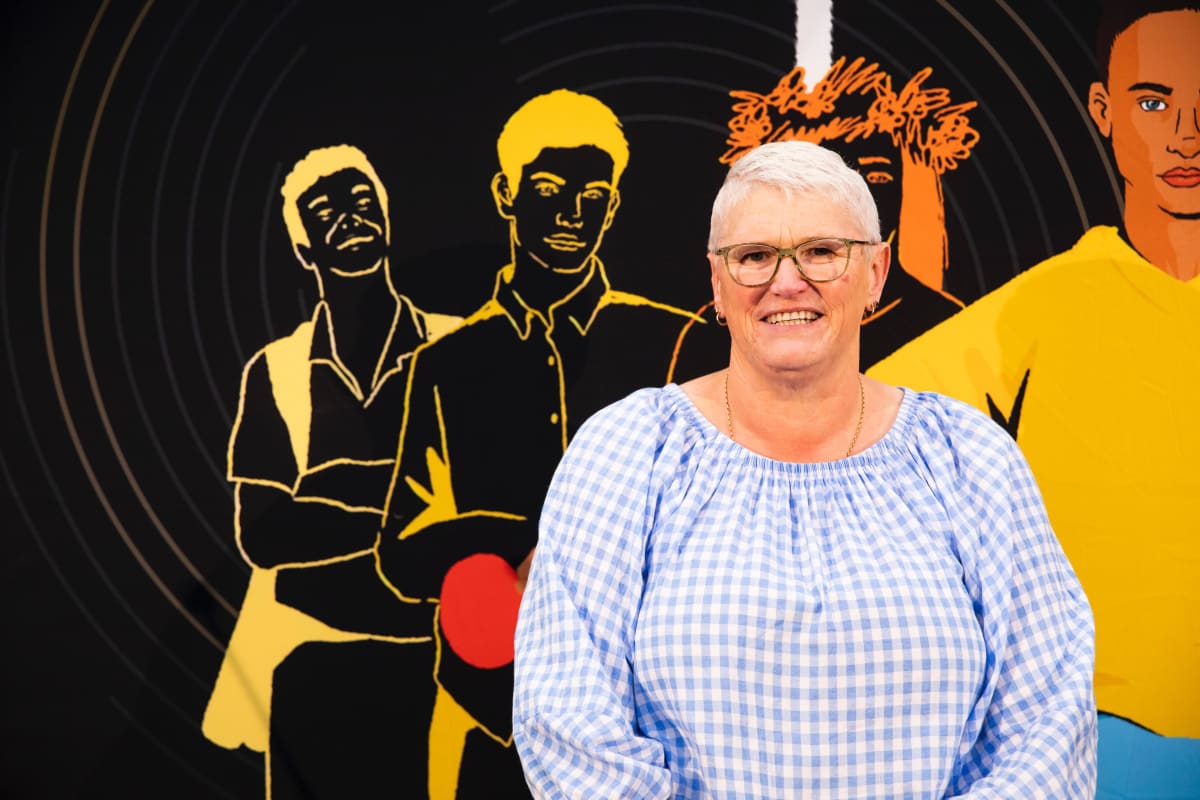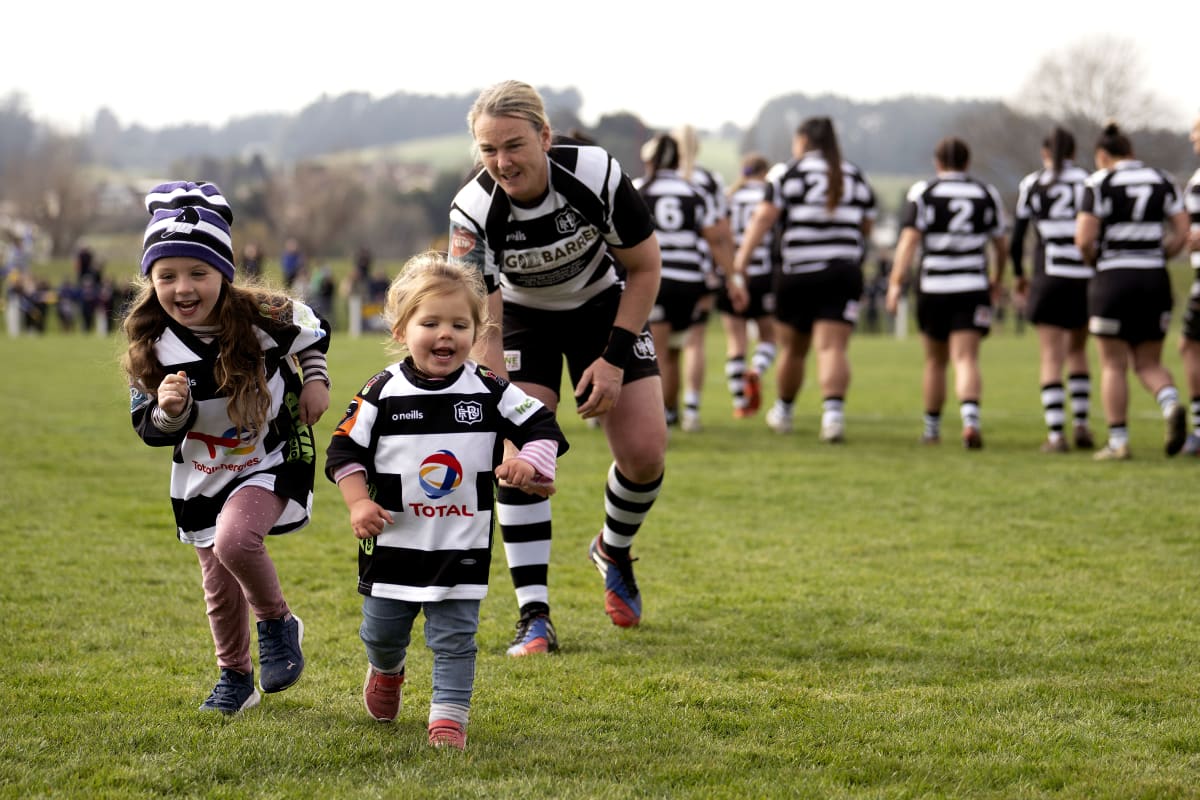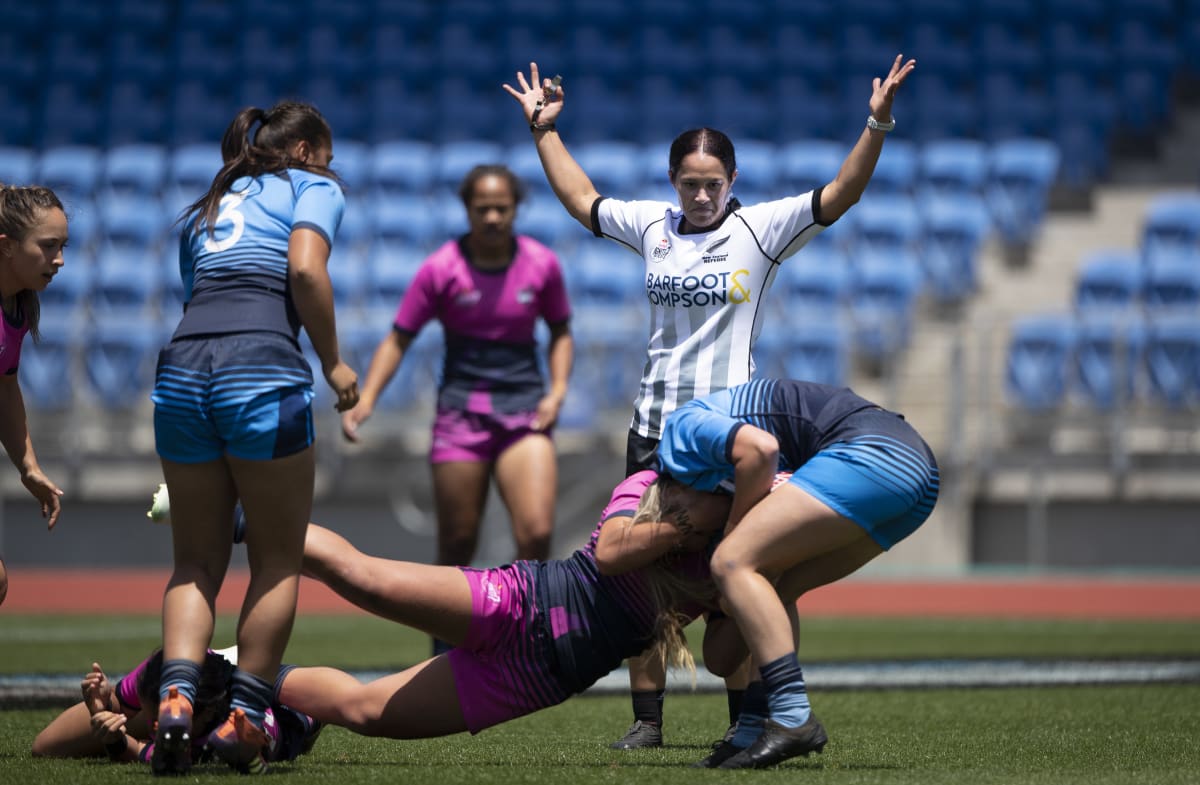
Kicking old school attitudes, bias and 'boofheads' into touch is at the heart of NZ Rugby's new women and girls strategy. But in Mid-Canterbury, a Silver Fern is beating them to it, Suzanne McFadden discovers.
When Tanya Dearns started as CEO of Mid-Canterbury Rugby Union last year, she asked a simple question: Why were girls who wanted to play rugby being treated like boys?
The always-frank Silver Fern defender and professional netball coach had just moved into Heartland rugby and was baffled by what she saw.
“You come from a female-dominated sport like netball into a male-dominated sport with long-standing traditions, and they were rolling out women’s programmes just like the men’s – and yet they’re different beasts,” says Dearns (nee Cox).
“Women think differently, they behave differently, their bodies are different when it comes to a contact sport and tackling.”
So Dearns appointed a women’s rugby development officer, Kirsty Arps, who created tailor-made skills programmes for girls, and pink training t-shirts and boot bags with a ‘Born to be a rugby princess’ motif. “The girls went back to their clubs, and all the boys wanted that stuff too,” she says. The girls returned with a new confidence on the field, as well.
This season, in response to the growing interest following the Black Ferns’ World Cup victory, Mid-Canterbury are rolling out a women’s 10s programme – with childcare at trainings - so women don’t have to cross the Rakaia River to play their rugby in another union. They’ve already had 40 new players sign up.
While some provincial unions like Mid-Canterbury are trying to make a difference for women and girls, that level of investment isn’t the same across the country.

So Dearns is happy to see New Zealand Rugby’s new ‘10-year Women and Girls in Rugby Strategy’, launched yesterday, will provide fit-for-purpose resources for all females – to get more playing and staying in the game. And it promises more support for women in leadership and governance in the sport – Dearns is one of just three women CEOs across 26 unions in Aotearoa.
“It’s really exciting to see that strategy come together and provide a blueprint for women and girls in rugby,” she says.
“We need to make sure all the money isn’t just funnelled to the top, to high performance rugby. I think this strategy will go a long way to show very clearly where that money’s required.”
As far as funding goes, New Zealand Rugby has committed to investing $21.7m into the female game in 2023.
That’s not a significant step-up from 2022, when they poured in $21.3m, but that was a pinnacle year for the Black Ferns defending the World Cup at home. The year before that, it was just $11.4m.

The point of the strategy is to identify where attention is needed most, and help unions to develop their own ‘action plans’ and “enhance the experience for women and girls in rugby for the next decade”, says NZ Rugby chair Dame Patsy Reddy.
Because it's obvious from those they spoke to in rugby communities across the country that all is not well with the female game.
"Men running women's rugby who are boofheads and think woman (sic) are inferior" - a stakeholder's response to the state of the female game in NZ.
Over 12 months, NZ Rugby travelled the country and spent more than 1500 hours of consultation with over 2200 people contributing to the strategy.
And a lot of the feedback they collected was hard to hear, admits Claire Beard, NZ Rugby’s head of women’s rugby.
“Some of it was quite confronting – that women don’t see a place for themselves in rugby, they don’t feel included, they feel like the leaders in the system don’t reflect who they are. I want all our women to feel included and valued and heard in the sport that I love,” she says.
“The lack of representation at boardroom tables, the lack of a voice, the lack of facilities that meet their needs, the poor timings when scheduling takes place. Now we can collectively start doing something about it.”
“Countless (barriers), uniform, changing rooms, coaches and lack of female coaches, lack of formats appropriate to players, size and age of player. Most unions are only scratching the surface of the potential for young players” – a stakeholder's response.
Unions and organisations across the country are being asked to develop action plans around five focus areas:
Culture - making the sport more inclusive, including having at least 40 percent women in governance across all rugby organisations, including clubs .At the moment it’s 24 percent across rugby, and only three percent of board chairs are women (and NZ Rugby has already been penalised as the last of the 65 major sports in the country to meet the 40 percent female threshold). There will also be ‘unconscious bias training’ to shift mindsets around the female game.
System - described as ‘rugby system collaboration, investment, roles, resourcing and accountability’. Identifying what the grassroots game needs and ensuring all regions have well-delivered women and girls community rugby; targeted recruitment of women in roles across the sport; and decisions at all levels of the game consider the impact on all genders.

Participation - ensuring women and girls player numbers are growing at an average rate of 2500 players a year (up to 50,000 by 2033). There’s been an average of 24,000 female players over the past five years, but registrations this season are double what they were in 2019. Increasing girls-only programmes at all stages of the pathway; offering non-contact rugby right through to the 16-18 age group.
“All Blacks are the brand for rugby at NZR. The Black Ferns are a link deeper in the website, and they don’t have their own presence, which unconsciously reduces the value and profile of women in rugby” – a stakeholder's response.
Performance - improving the results by the Black Ferns and Black Ferns Sevens, while growing and keeping fans, increasing crowds at regional competitions and making sure the women’s game is commercially attractive. It’s also about having more female referees - right now there only 82 women or 5.7 percent of refs – and more female coaches (currently only 945 of them, or 9.3 percent, across the country).
Transitions - retaining women and girls in all aspects of rugby. Increasing the annual average of returning players from 40 percent to 55 percent (88 percent of players are aged under 18). And making sure they move easily transition into tackle or girls-only rugby; and officials training in the art of how to referee women and girls.
“There are a small number of great coaches, male and female, with skills and experience coaching W&G in rugby. Their successes are there to be tapped into and shared" - a stakeholder's response
Six new roles are being created from NZ Rugby’s action plan to focus on building the game – including a head of women’s high performance, a Black Ferns campaign manager, women’s referee development manager and head of community rugby for women and girls.
Beard says the main theme that arose from the consultation was the breadth of issues that need to change.
“We had over 200 strategic priorities raised by the rugby community where change needed to happen for women… to create a more equitable, healthy and positive environment. It showed the complexity of what we’re dealing with,” she says.

The strategy draws up prioritised ‘building blocks’ for unions to use to improve the women’s game.
“It covers all areas of the game – from governance to culture change, leadership, and decisions, refereeing, coaching, the safety of the game for girls. To really have a sustainable system shift, it looks at all those areas and gives a practical way we can all work together to achieve it,” Beard says.
“It’s not just tackling the things we think about that are important, but the things that aren’t always front of mind. There’s the interesting big stuff like the professionalisation and commercialisation of the game, but then there’s getting board tables working more effectively, and actual women’s voice mechanisms, so women can tell you what they need.”
“The male dominated club committees. They are made up of males from the 60s, 70s and 80s who don’t realize society has changed and keep trying to run the clubs the same way. They need to change and must change" - a stakeholder's response
Although Tanya Dearns has a formidable netball background, she’s been surrounded by rugby, too. One of her sons, Warner, plays professional rugby in Japan and her husband, Grant, has coached the sport around the world.
She’s excited by the prospect of more opportunities for women to upskill in leadership and governance roles.
“Right now there are only three female CEOs throughout the country – me, Bridget Belsham at Whanganui Rugby and Andrea Jackson in Manawatu. But I think we make the most noise,” she says.
“We now have a good split on our Mid-Canterbury board - three of the seven members are women, and we’re seeing more of our club community engaging with females on their committees. We have a dinner for all the women on our committees to talk about the challenges they face, and the support they need.”
Now it’s up to other unions to follow suit.







